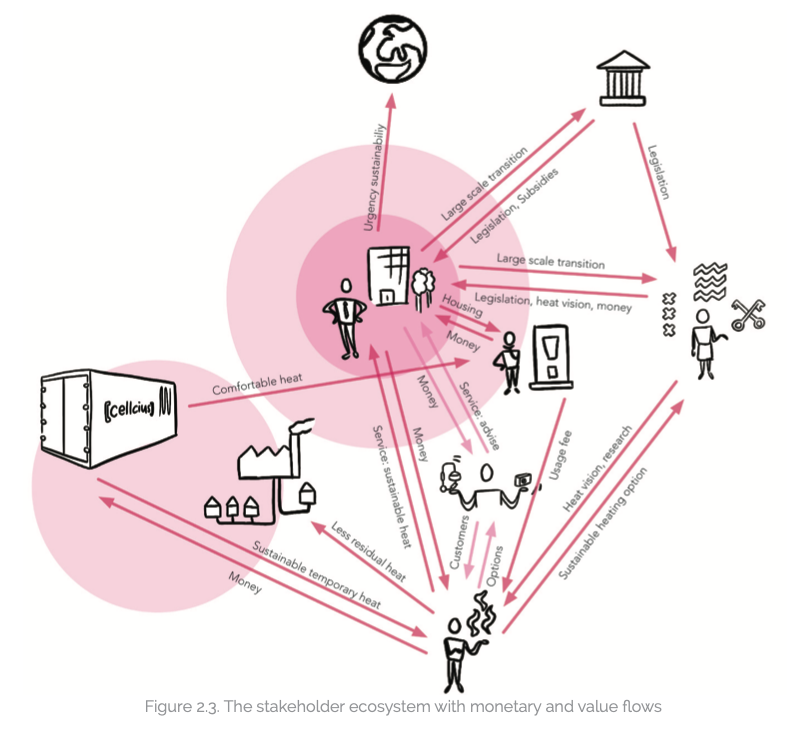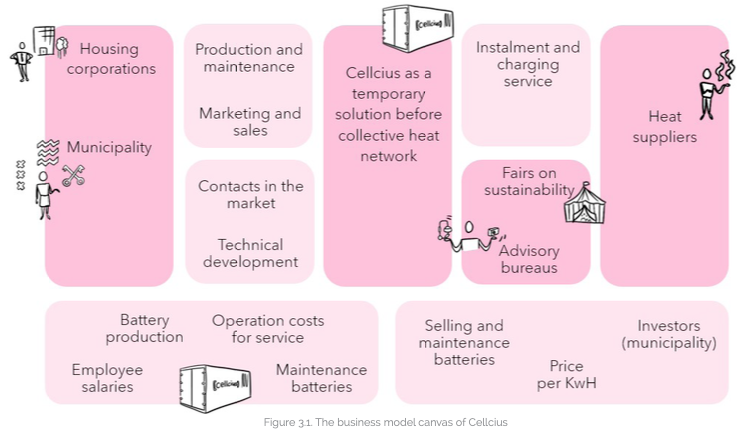B&E
During Design Innovation Strategies, I learned different methods of developing and proving the validity of a business model for innovative products. This was done via the case of Cellcius, a startup in innovative heating solutions.

The most valuable method I learned during this course was Hypothesis Driven Entrepreneurship. When using this method, you go over your business model and see what kind of assumptions you have about the market, of hypothesises you can draw from the model, e.g. “municipalities would like to invest in sustainable heating solutions”. By gathering all these assumptions, it becomes very easy to check them. After consulting an expert on the topic, the hypothesis is then accepted, or you pivot towards a new option.
This course was also very amendment on going out and interviewing stakeholders, experts and users. Of course I had done user studies before, and talked to some experts, but because of business case we had we were really forced to go out. It was not really possible to interview any users, which meant we were left with contacting many different stakeholders and experts, and thus interviewed renovation companies, other energy-related start-ups, the municipality, energy companies and housing companies. Being forced into this out-going attitude is one of the best things I gained thought the master, and has helped me a lot during my FMP.
For Cellcius we ended up proposing a business model where they would function as a temporary solution during the energy transition, as experts told of the maintenance would not be manageable forever. The customer would be able to get an environmentally sustainable option quickly, while better, but more time consuming options (e.g. heat network), were under construction. This would also relief energy companies, housing corporations and the municipality, as it gave them the time to negotiate with suppliers and build an infrastructure, without making it too determined to be able to adjust it in the future.




Geef een reactie